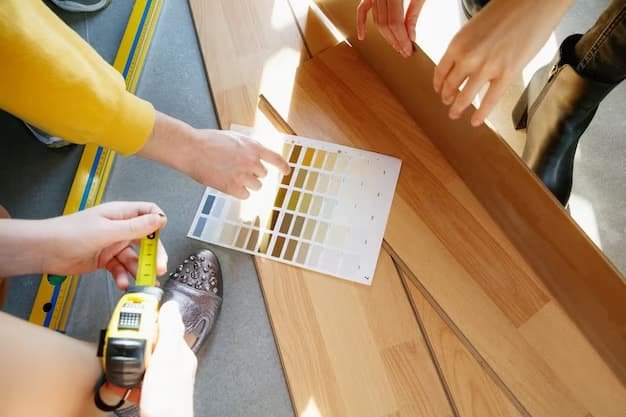Sustainable Interior Design: Creating Eco-Friendly Spaces
In the age of environmental consciousness and increasing concern for the planet’s well-being, sustainable interior design has emerged as a powerful movement in the world of home decor. Beyond just aesthetics, it prioritizes the use of eco-friendly materials, energy-efficient systems, and thoughtful design practices that minimize the impact on the environment. By embracing sustainable interior design, we not only create beautiful spaces but also contribute to a greener and healthier planet for future generations. In this blog, we will delve into the principles of sustainable interior design and explore creative ways to design eco-friendly spaces that are both stylish and environmentally responsible.
Embracing Sustainable Materials
One of the fundamental aspects of sustainable interior design is the conscious choice of materials. Eco-friendly materials are those that are responsibly sourced, non-toxic, and have a lower carbon footprint. Natural materials like bamboo, cork, reclaimed wood, and recycled metals are excellent alternatives to traditional materials like hardwood and synthetic fibers. These sustainable choices not only reduce deforestation and waste but also add unique textures and warmth to your interiors.
Energy-Efficient Lighting Solutions

Lighting plays a crucial role in interior design, and energy-efficient lighting solutions are key to sustainable living. Opt for LED bulbs and fixtures that consume less energy, have a longer lifespan, and emit less heat. Implementing dimmer switches and motion sensors can further reduce energy consumption, ensuring that lights are only used when needed. By integrating natural light sources, such as skylights and large windows, you can also minimize the need for artificial lighting during the day.
Sustainable Furniture and Furnishings
Furniture and furnishings are significant contributors to environmental degradation. When selecting furniture, look for pieces made from sustainably harvested wood or opt for pieces crafted from recycled or upcycled materials. Avoid furniture with toxic finishes or harmful chemicals that can off-gas into your living space. Choose upholstery fabrics made from organic or recycled fibers, and explore eco-friendly alternatives like soy-based foam for cushions.
Smart Space Planning and Design
Sustainable interior design encourages thoughtful space planning to optimize the use of natural light and ventilation. By arranging furniture strategically, you can create better airflow and reduce the need for air conditioning or heating. Open floor plans with fewer walls can also facilitate better energy flow throughout the space. Integrating biophilic design principles, such as incorporating indoor plants and natural materials, further enhances the overall well-being of the occupants while fostering a connection to nature.
Recycling and Upcycling
Incorporate recycling and upcycling into your interior design by finding creative ways to repurpose old items. Transforming vintage furniture pieces, salvaging architectural elements, or turning discarded materials into new decor can add character and charm to your space while minimizing waste. Embrace the concept of “one person’s trash is another person’s treasure” to find unique and sustainable pieces for your eco-friendly home.
Low VOC (Volatile Organic Compounds) Paints

Conventional paints release harmful VOCs into the air, contributing to indoor air pollution and adverse health effects. Opt for low or zero-VOC paints, which are free from toxic chemicals and odors. These paints are available in a wide range of colors and finishes, ensuring that you don’t have to compromise on aesthetics while prioritizing your health and the environment.
Energy-Efficient Appliances
In a sustainable interior, choosing energy-efficient appliances is a crucial step toward reducing the overall carbon footprint of your home. Look for appliances with high ENERGY STAR ratings, which are designed to consume less energy while performing efficiently. From refrigerators and washing machines to air conditioners and water heaters, making energy-conscious choices can significantly lower your utility bills and conserve valuable resources.
Water-Conserving Fixtures
Water is a precious resource, and it’s essential to use it responsibly in our homes. Incorporate water-conserving fixtures like low-flow toilets, aerated faucets, and rainwater harvesting systems to minimize water wastage. Graywater systems can also be implemented to reuse water from sinks and showers for irrigation purposes, further reducing water consumption.
Conclusion
Sustainable interior design goes beyond mere aesthetics; it is a conscious and responsible way of creating beautiful spaces while safeguarding our planet’s resources. By embracing eco-friendly materials, energy-efficient lighting solutions, and sustainable furniture, we can make a positive impact on the environment. Incorporating smart space planning, recycling, and low VOC paints ensures that our homes are not only aesthetically pleasing but also healthy and safe for our families.
As responsible stewards of our planet, we have the power to make mindful choices that support sustainable living. By embracing sustainable interior design principles, we can create eco-friendly spaces that inspire a greener future for generations to come. Let us unite in this endeavor, one eco-friendly space at a time, to build a more sustainable and harmonious world for all living beings.


